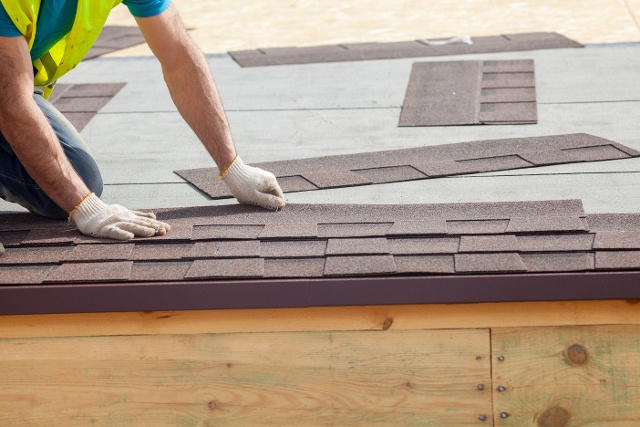
09 May Repair or Replace? 7 Signs You Need a Roof Replacement
Regular maintenance and repairs extend the life of your roof for a decade or longer, but when is the damage extensive enough to warrant a full roof replacement? Here are seven signs that it is time for you to invest in a new roof rather than patch a problem.
Consider the age of your roof

Stronger asphalt shingles are organic-based made with recycled paper and wood fibers that are saturated with an asphalt coating and surfaced with weather-resistant mineral granules. Fiberglass shingles are preferred in the right climates ASTM fire-resistance rating. Organic shingles will fare better in cold climates, and since they contain more asphalt, they are often more durable.
Other roofing options such as metal, tile, or slate can last decades longer than an asphalt roof, and they often require less maintenance. These types of quality materials are expensive to install on your roof, but they may last a lifetime.
Age is a significant factor in replacement versus repair for an asphalt roof because the materials degrade over time from sun exposure. If your asphalt roof is 25-years-old or older then it is a sign that it’s time for a new roof.
Curling shingles

The roof is sagging
A sagging roof is a severe problem, and it is a warning that your home is at risk of a roof collapse. Long-term water damage causes roof sagging. Moisture finds weak spots in the materials, and as it settles, it causes materials to deteriorate. The water can also encourage mold and mildew growth that will further damage the shingles and roof support. Poor ventilation can also lead to a sagging roof by causing ice dams or rusting on nails holding materials together in the attic. The Federal Housing Administration recommends 1 square foot of ventilation for every 300 feet of attic space.
Moss or algae is covering the shingles
If you notice green vegetation growing on your roof, it is important that you take action as soon as possible. Moss or algae can cause shingles or lift or curl, which will damage the integrity of the roof structure.
An effective method to combat these intruders on your roof is to spray the problem areas with a mix of laundry-strength liquid chlorine bleach and water. Allow the solution to soak on the surface for 15 to 20 minutes, and then wash thoroughly with low-pressure water.
To prevent moss or algae growth trim nearby tree branches that minimize sunlight, clear off debris, encourage air flow down the slope to dislodge debris, keep gutters clean, or add zinc or copper strips.
Shingles are cracked or missing
It is possible to repair a section of damaged shingles, and place new shingles over older, cracked shingles. However, some city ordinances do not allow more than two layers of new shingles. Sometimes it is more cost-effective to replace the entire roof rather than a section, especially if the age of the roof indicates more repairs are likely in the near future.
You notice granules in the gutter
It is expected that your roof will lose some granules. However, if you notice large quantities of granules in your gutter after heavy rainfall, it may indicate your roof is at risk of UV exposure and deterioration. If you have a new roof, this sign should not concern you because the granules are likely excess. However, if your roof is not new and you are just now noticing an increase in granules in your gutter, it is possible the shingles are about halfway through their lifespan.
Sunlight shining through into the attic
Small holes in your shingles that allow light through into your attic will also allow moisture or even rodents into your home. You will need to determine if the area can be repaired or if replacement is the best option.
Inspect your roof regularly. Look up in your attic or use binoculars outside. If you determine it is time to bring in the experts, download this free Ebook that outlines the 15 questions you should ask your contractor, or contact usabout any questions you may have.
Ready for the next step?
Our Universal Roofing team has put together a free guide on 15 questions to ask your roofing contractor to ensure the project runs smoothly as possible.
You’ll learn all about the installation process, required roofing licenses, credentials, safety measures included in your project, and more!





